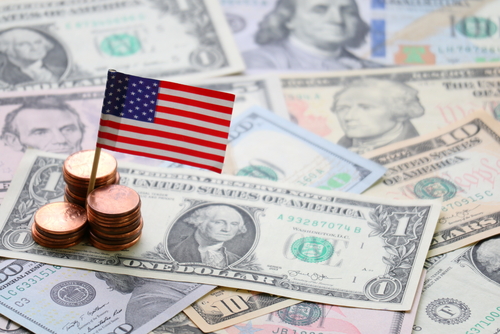
Monetary Policy & Inflation | US

Monetary Policy & Inflation | US
This article is only available to Macro Hive subscribers. Sign-up to receive world-class macro analysis with a daily curated newsletter, podcast, original content from award-winning researchers, cross market strategy, equity insights, trade ideas, crypto flow frameworks, academic paper summaries, explanation and analysis of market-moving events, community investor chat room, and more.
A string of negative data surprises has markets pricing cuts to the Fed’s main interest rate for 2023. The rationale is that a recession is imminent and likely to return inflation to 2% with less Fed tightening than previously expected.
I disagree. Certainly, the economy is slowing. It is returning to trend following extreme, pandemic-related volatility. It is also experiencing an air pocket. But it is not headed for an immediate recession. Rather, I expect a Fed-induced recession in 2023, and here is why.
Recent data indicates a slowdown in growth. Yet we should expect this because the US economy is returning to trend following the pandemic-induced volatility (Chart 1). True, Q1 2022 GDP growth was -1.6% qoq saar. But once you remove volatile components (inventories, net exports and government), growth was 3% qoq saar.

That said, the current slowdown is more than a simple return to trend. I think the economy is hitting an air pocket for three reasons: inventory cycle, dollar strength and peak fiscal consolidation.
A key source of market concern has been inventories. In Q1 2022, the contribution of inventories to growth was -0.4%. The Atlanta Fed’s latest GDP “nowcast” sees the contribution of inventories to GDP growth in Q2 at -2.4%. Media reports of inventories overhang at large retailers echo this macro data.
In my view, the ongoing decrease in inventories does not signal an impending recession for three reasons:
Because the inventory cycle reflects normalization rather than unexpected, broad-based demand weaknesses, I expect it to be over by end-year.
In addition to the inventory cycle, dollar appreciation is also contributing to softer growth. On a real, trade-weighted basis, the dollar has appreciated 12% over the past 18 months (Chart 2).

According to the Fed models, a 10% dollar appreciation lowers GDP by about 1.5% after three years, with over half the impact occurring after a year. The data seems roughly in line with this view: over the year to Q1 2022, net exports subtracted 1.7 ppt from growth (GDP growth was 3.7%), and the impact was particularly severe in Q1.
A stronger dollar also lowers inflation. The Fed models estimate that a 10% dollar appreciation lowers core PCE by about 0.5% in the two quarters following the appreciation, and gradually reverts it to base line.
Our dollar view is bullish over the medium term but bearish longer term. This suggests the dollar’s negative impact on growth and inflation could peak in Q4.
The third factor hitting growth is fiscal consolidation. Take the Hutchins Center Fiscal Impact Measure. It estimates how much local and federal government taxes, transfers and spending add or subtract to GDP growth. And it shows peak negative impact of fiscal policy in Q2 2022 (Chart 3).

The above discussion suggests growth is likely to remain soft in Q2-Q3. But I do not expect this soft patch to turn into a recession for two reasons.
First is labour market strength. Employment growth is currently about 4.5% on an annual basis. Employment growth has never been this strong at the start of a recession.
Second, the household savings rate will likely continue to fall as households spend the savings accumulated from pandemic-related transfers. After all, unemployment and the need for precautionary savings are low. Median household wealth remains high despite the selloff. And retail savers’ real interest rates are negative.
As inflation rises, it has broadened into wage growth (now at 6.1%). And the wage-price spiral will probably strengthen as the expansion continues. This is because, with unemployment back to decades low and demand still strong, employers are bound to pay up to secure additional workers.
Already, anecdotal evidence tells of employers accelerating wage increases to secure their workforce. In addition, the ongoing consumption switch from goods to services is bound to increase the demand for workers in the services sector, and therefore wages.
In its latest annual report, the BIS highlighted that economies currently face significant risks from moving to a high inflation regime due to the development of wage-price spirals. It further stressed that withdrawing from a high inflation regime entailed large output and employment costs.
Together with the above discussion, the BIS report adds to my conviction that the Fed will have to keep hiking interest rates into 2023 and much higher than the market currently expects – even approaching 8%.
If my view is correct, the Fed is mispriced, and bonds and equities have further downside.
Spring sale - Prime Membership only £3 for 3 months! Get trade ideas and macro insights now
Your subscription has been successfully canceled.
Discount Applied - Your subscription has now updated with Coupon and from next payment Discount will be applied.